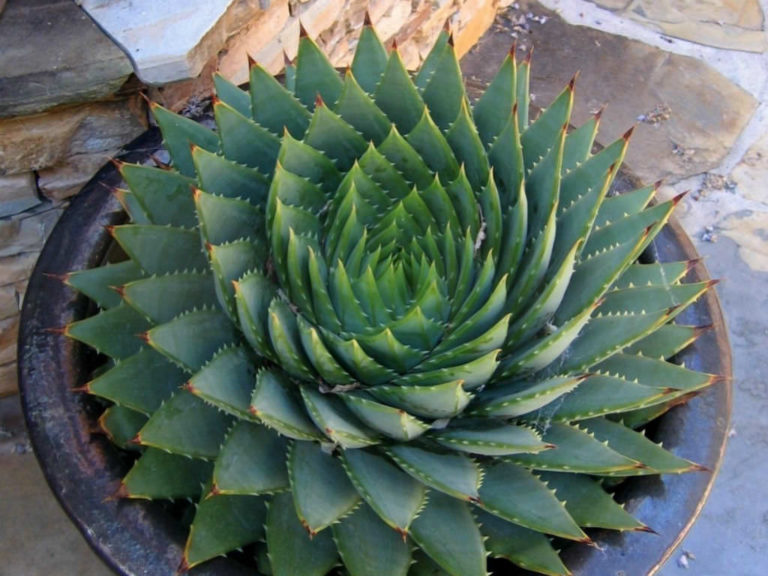

The plant may reach a foot (31 cm.) in height and 2 feet (61 cm.) across once fully mature. A large, single rosette rises with white to pale green spines on leaf edges. Spiraling begins when the plant is 8 and 12 inches (20 and 31 cm.). The spiral aloe is unusual, with symmetrical leaves twirling around in a circle of growth.

That said, seeds are available for purchase online. Lack of babies partially explains the rarity of this South African native. Spiral aloe ( Aloe polyphylla) information says pups don’t often grow on this plant, but propagation from seed is simple.
#Growing spiral aloe from seeds in zone 8b how to#
If you’re lucky enough to come across this interesting aloe plant, tips on how to grow spiral aloe will be next on your list. Finding the stemless plant may be somewhat of a challenge, though. For more information, give us a call at 76.Ĭlick here for complete Price List.Attractive and rare, the spiral aloe plant is a worthwhile investment for the serious collector. Other sizes may be available for pick up from our growing grounds in Fallbrook, CA. There is a minimum purchase of any 4 plants for online orders. Propagation: This plant can be grown from seed or from plantlets offset at the base.

It is a good plant for street medians, xeriscape and succulent gardens and can also be grown in a large container. Uses: Yucca baccata makes a nice landscape border plant. Maintenance: Remove spent flowering spikes as desired. Origin: This common yucca is native to the deserts of southwestern US and northwestern Mexico.Ĭold Tolerance: 0 to 5☏ -17.7 to -14.9☌ Horticultural Dataĭescription | Horticultural Data | Shipping & Availability | TopĬommon Names: Banana Yucca, Broad-leaf Yucca, Datil Yucca, Spanish Bayonet, Spanish Dagger, Fleshy-Fruited Yucca, Amole This plant can be grown from seed or also from plantlets offset at the base. Outside of its native habitat it must be hand pollinated to set seed. Like many yuccas it is pollinated by a moth which is specific to each species. The woodrat also uses this plant’s leaves to create the outer portion of its burrow-style nest. Young flower shoots were also eaten like asparagus. The fruits, which look like short green bananas, are edible and were eaten green or stored for winter consumption. Some rootbeers use the yucca to create a rich foamy head. From the saponin-rich roots shampoo and soap products were obtained. The leaf tips were used as paint brushes for decorating pottery. Leaf fibers were uses to make string and ropes and woven into fabrics, garments, baskets and mats. Native Americans had many uses for this plant. It can also be grown in a large container. It is a nice plant for street medians, xeriscape and succulent gardens. Yucca baccata makes a nice landscape border plant. Individual rosettes are monocarpic and die after flowering but often offset many smaller plants at the base. Yucca baccata blooms in summer with a beautiful display of large white bell shaped flowers which hang from short branches on a central inflorescence. Leaves grow in a spiral rosette from the base stem. The leaves which are 2-3′ long also have curly white fibers on their margins. This yucca has large gray-green stout straplike and sharply pointed leaves leaves. Horticultural Data | Shipping & Availability | Top The increased sophistication of plant collectors taking an… The use of Agaves as a drought tolerant landscape plant. The use of Agaves as food crop for a world undergoing climate change. Agaves come from the New World (The Americas) and Aloes come from the Old World (Africa?) Additionally Agave interest has exploded recently. Another way to tell is where they come from. In time, with experience, the structure and charisma of the plant will tell you. Break an aloe leaf in half and you will see a very juicy mucilagenous substance. Break an agave leaf in half and you will see very thick and tough agave fibers. Begining succulent collectors have as one of their first challenges to tell the difference between an Agave and an Aloe. Paper, juice, food, clothing, pulque, you name it, an agave made it! at our nursery we have a very nice assortment of Agave plants for sale. Agaves are also the universal source of materials and products of the early mesoamericans. These fierce and outspoken plants were originally found only in the New World.


 0 kommentar(er)
0 kommentar(er)
